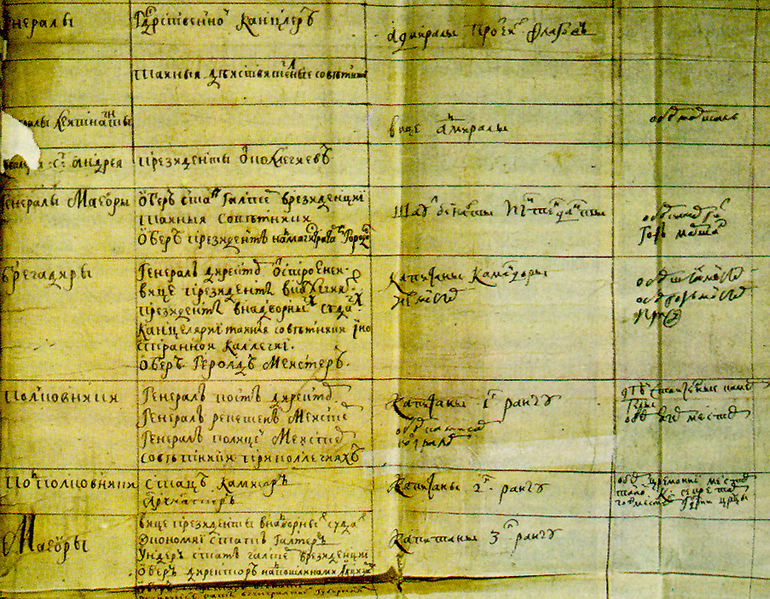
On this day in 1722 Russian emperor Peter the Great introduced a Table of Ranks in his country, according to which civilian and military officials were divided into a new system of grades (ranks).
This way he created a system in which state officials had a hierarchy of ranks similar to that of military officers. For example, an official who advanced to the rank of State Councilor (Russian: Действительный статский советник) was of equal rank to a Major General in the Army.
The table contained a total of 14 grades, where the lowest was Collegiate Registrar (for civilians) or Warrant Officer (for soldiers). The highest rank in the civilian hierarchy was that of Chancellor (Russian: Канцлер), while in the military it was that of General Field Marshal (Russian: Генерал-фельдмаршал).
The point of introducing such a hierarchy was to reduce the importance of the hereditary nobility (boyars), which was now – at least in theory – supposed to begin its career at the lowest rank, despite bearing the hereditary titles of princes. On the other hand, this system helped create a powerful bureaucracy, necessary for governing the growing Russian Empire.




